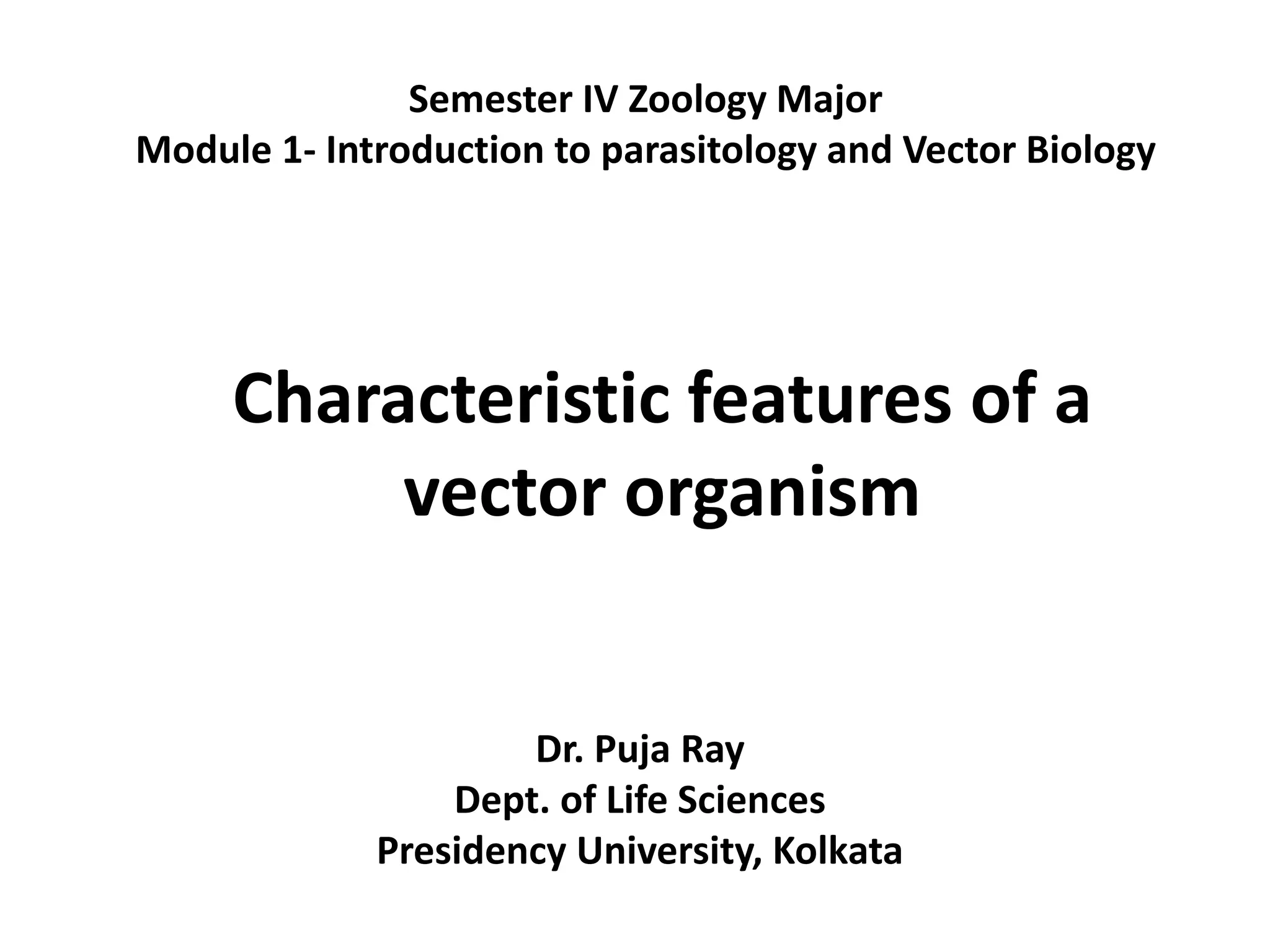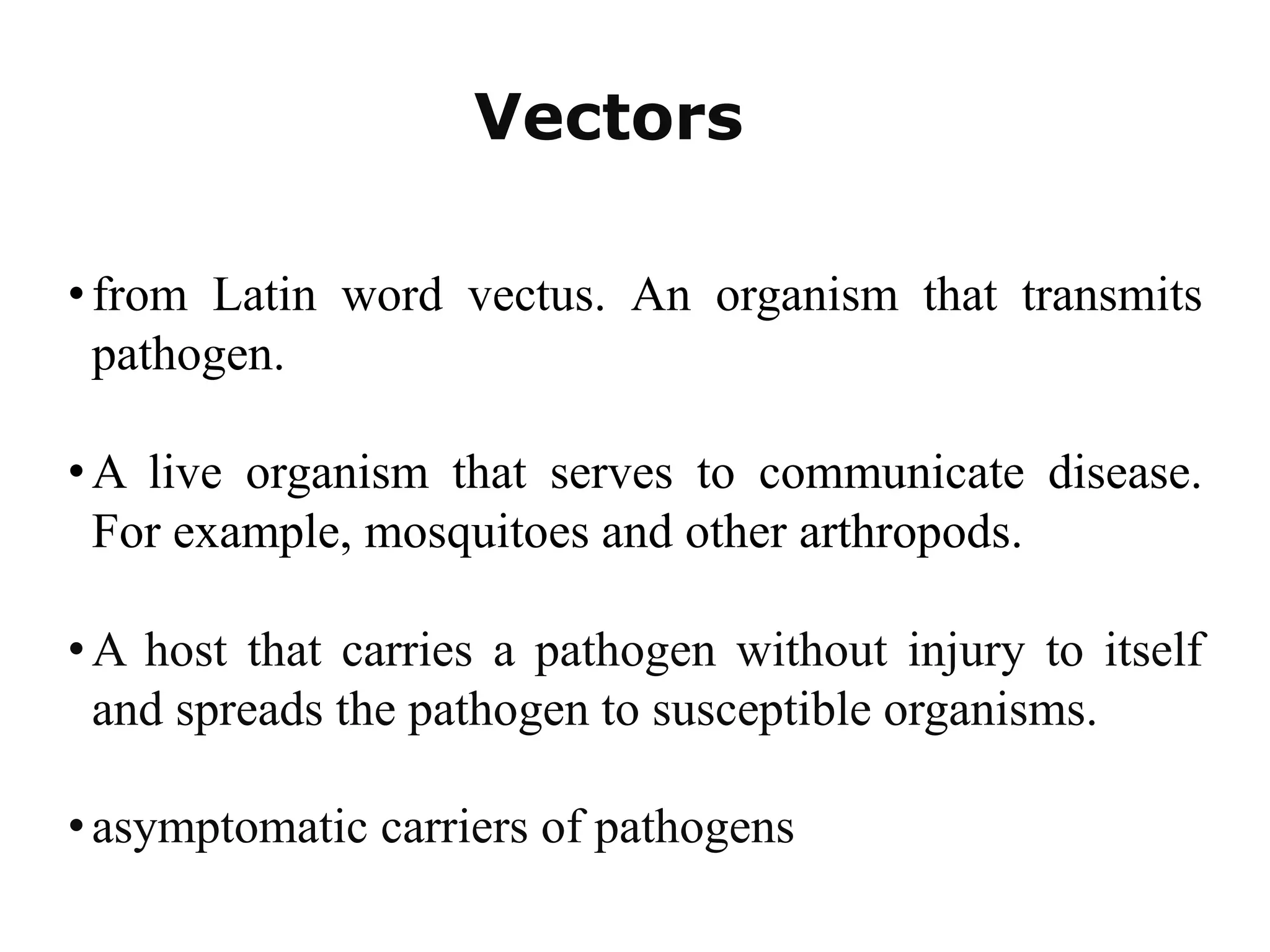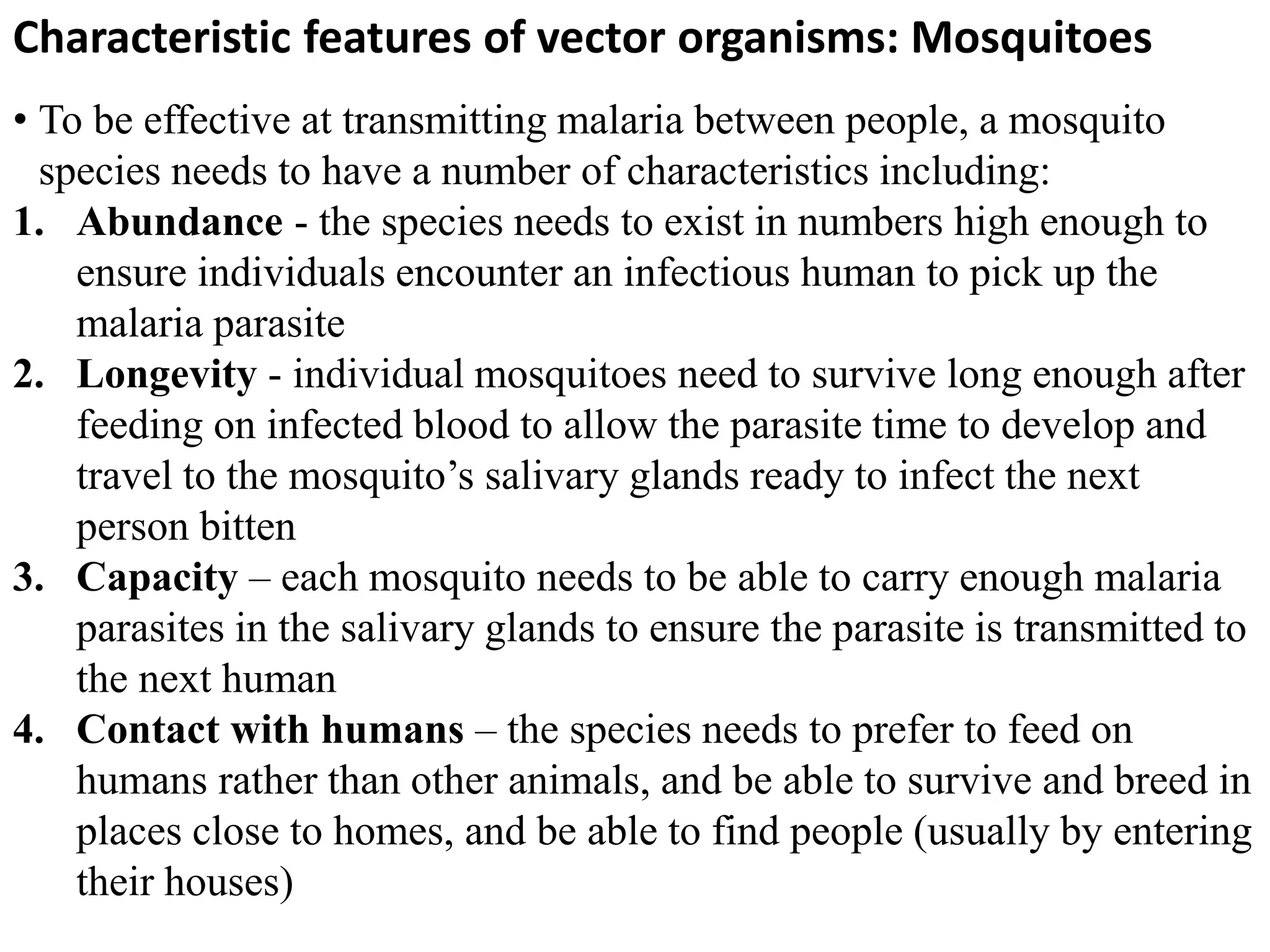The document discusses the characteristic features of vector organisms that transmit pathogens. It provides details about ticks and mosquitoes as vectors. Some key features of ticks that make them efficient disease vectors include their adaptability, ability to firmly attach to hosts, high reproductive rates, ability to survive long periods without feeding, and ability to feed on a wide range of hosts. The document also outlines several characteristics of mosquitoes that allow them to effectively transmit malaria, including their abundance, longevity, capacity to carry parasites, and preference for feeding on humans.
















